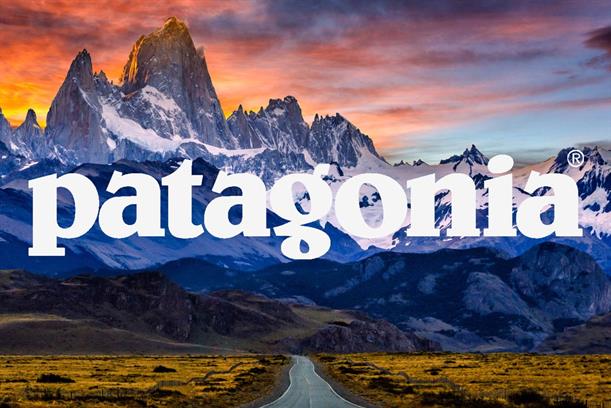Building a strong and distinctive brand goes beyond designing logos and choosing colours; it’s about crafting a compelling story that resonates with the target audience and it always starts with WHY?
WHY do we exist? At the core of every brand lies a powerful purpose that drives everything they do. By understanding and communicating the purpose clearly, brands have a North Star that guide decisions, either internal or external and they establish a meaningful connection with their audiences: employees, partners, customers.

In this article, we will explore the elements that shape brand purpose and the link between purpose, positioning and values and exemplify through a world class brand.
The Brand Purpose refers to the reason for a brand’s existence beyond making profits. It encapsulates the brand’s higher mission and the impact it aims to have on its customers and the world. Brand purpose goes beyond selling products or services and focuses on the broader societal or environmental contributions a brand seeks to make. It defines the brand’s reason for being and serves as a guiding principle for its actions and decisions.
Brand Positioning is closely linked to Purpose and is about how a brand differentiates itself from competitors in the minds of the audience. It involves identifying and emphasizing the unique value proposition and competitive advantages that set the brand apart. Brand positioning is about finding a distinct space in the market (What is the market problem we are solving?) and establishing a favourable and memorable position in the minds of consumers. It answers the question, “Why should customers choose our brand over others?” and aims to create a compelling and differentiated perception of the brand.
Many times, a strong purpose statement (WHY your brand exists) is all it takes to align audiences, create a strong culture, and project a unified vision on the outside as well. Purpose, mission, vision, and positioning become the same as there is no one agreed term in brand strategy. But positioning has a higher degree of flexibility while purpose is overarching. Positioning can be applied to specific customer segments and markets while purpose impacts (or should impact) all segments alike.
Tesla’s brand purpose revolves around accelerating the world’s transition to sustainable energy.
Amazon’s Why is Earth’s most customer-centric company.
Sony creates technologies that inspire people to dream and find joy.
Patagonia is an outdoor apparel and equipment company known for its commitment to environmental sustainability and social responsibility. Their brand purpose goes beyond selling outdoor gear; it revolves around their mission statement: “We’re in business to save our home planet.”
Patagonia’s brand purpose is deeply rooted in their dedication to environmental activism and creating a positive impact on the planet. They actively strive to minimize their environmental footprint, promote sustainable practices, and inspire others to take action. They have implemented various initiatives such as using recycled materials in their products, supporting grassroots environmental organizations, and encouraging customers to repair and reuse their clothing rather than buying new ones.
By aligning their brand purpose with their products and business operations, Patagonia has cultivated a passionate community of loyal customers who share their values and appreciate the company’s commitment to sustainability. Their brand purpose drives their decision-making processes, shapes their messaging, and influences how they engage with their audience.
Patagonia’s brand purpose serves as a guiding principle for the company, influencing everything from their product development to their marketing campaigns. It demonstrates how a brand purpose can transcend product offerings and create a deeper connection with customers by aligning with their values and beliefs.

Patagonia’s Brand Values go deeper and explain “how they do things”, how they make hires, how they decide which causes to invest in or which strategic partnerships are on-brand. Their core values reflect their commitment to environmental sustainability, social responsibility, and fostering a love for the outdoors:
- Environmental Stewardship: They prioritize sustainable practices, minimize their ecological footprint, and advocate for the preservation of natural resources and wild places.
- Quality and Durability: Patagonia values the durability and longevity of their products. They design and produce high-quality gear that is built to last, reducing waste and promoting a culture of reuse and repair. They have detailed video and photo DIY repair guides on their website that teach customers to fix old clothes.
- Transparency: Patagonia openly shares information about their supply chain, materials used, and the environmental impact of their products, empowering customers to make informed choices. Fair trade has a dedicated chapter in all their initiatives and comms campaigns.
- Activism: Patagonia actively engages in environmental activism. They use their platform and resources to advocate for policy changes, support grassroots environmental organizations, and raise awareness about pressing environmental issues. They have many calls to action on their website including links to petitions and climate action events.
- Work-Life Balance: Patagonia values work-life balance and they encourage employees to pursue their passions outside of work, fostering a culture that supports personal well-being and a connection to nature.
- Innovation: They continuously seek new ways to improve their products and business practices, challenging conventional norms and driving positive change.
These values set Patagonia apart and resonate deeply with their target audience, creating a strong and loyal community of customers who share their values. Patagonia’s unconventional approach to business and their unwavering commitment to environmental and social causes have made them a unique and inspiring company within their industry.
By strategically considering and integrating purpose and values, these components of brand strategy, businesses can develop a strong and effective brand strategy that differentiates their brand, resonates with the target audience, and creates long-term brand loyalty.
Visual identity and tone of voice (Look, Feel & Sound) are also part of the key brand strategy elements. They play a pivotal role in shaping the brand’s perception. Visual identity is brought to life through carefully designed logo, symbols, colour palette and type family. The verbal identity is built through the tone of voice lens. These elements not only capture the essence of the brand but also leave a lasting impression.
We have recently partnered with Kremmer Branding and Design for UK and international branding projects and offer high value packages for new or established businesses: naming, brand strategy and design.

